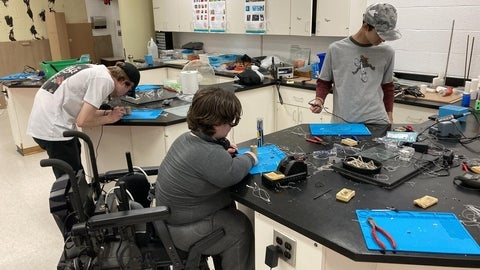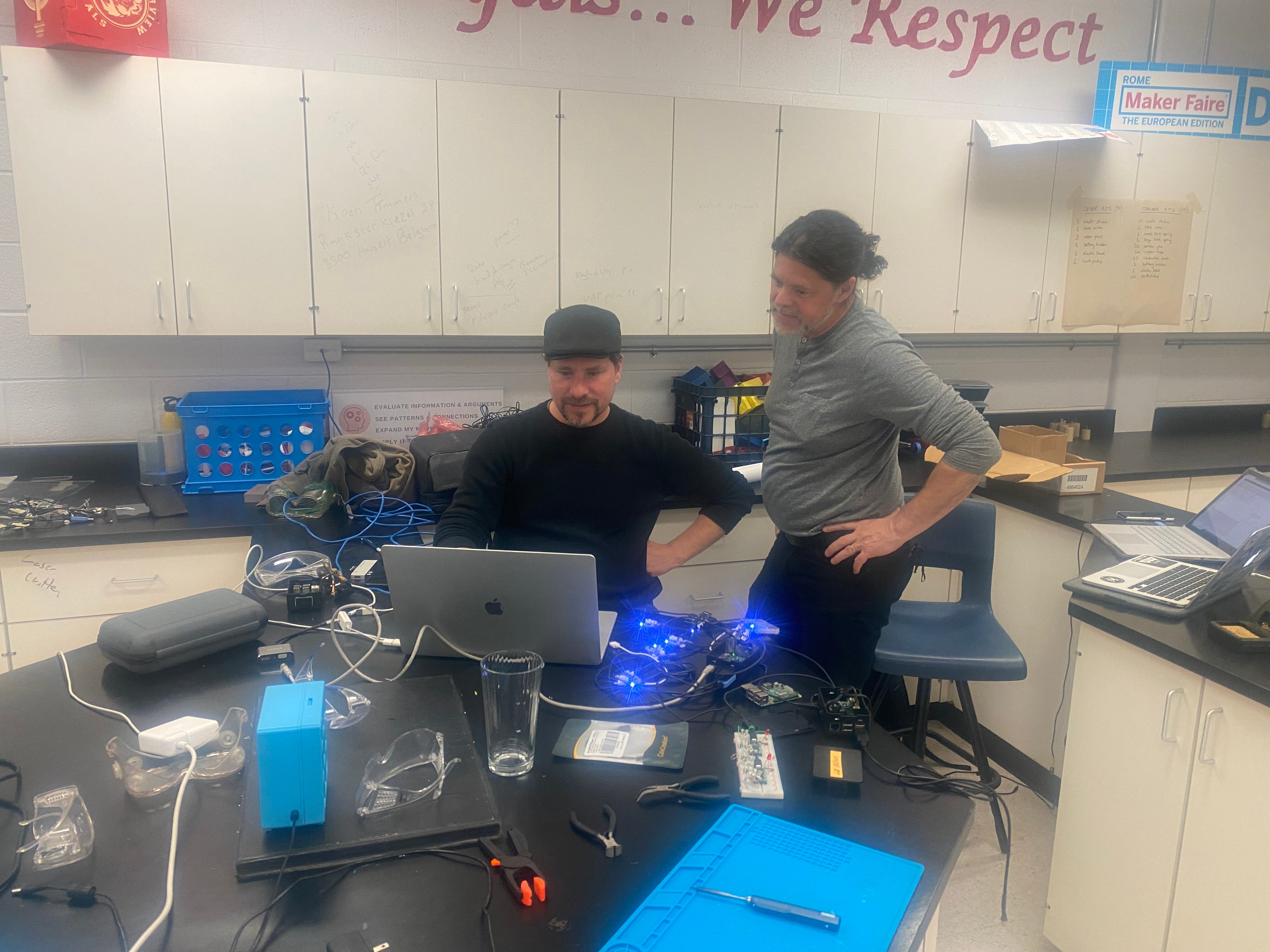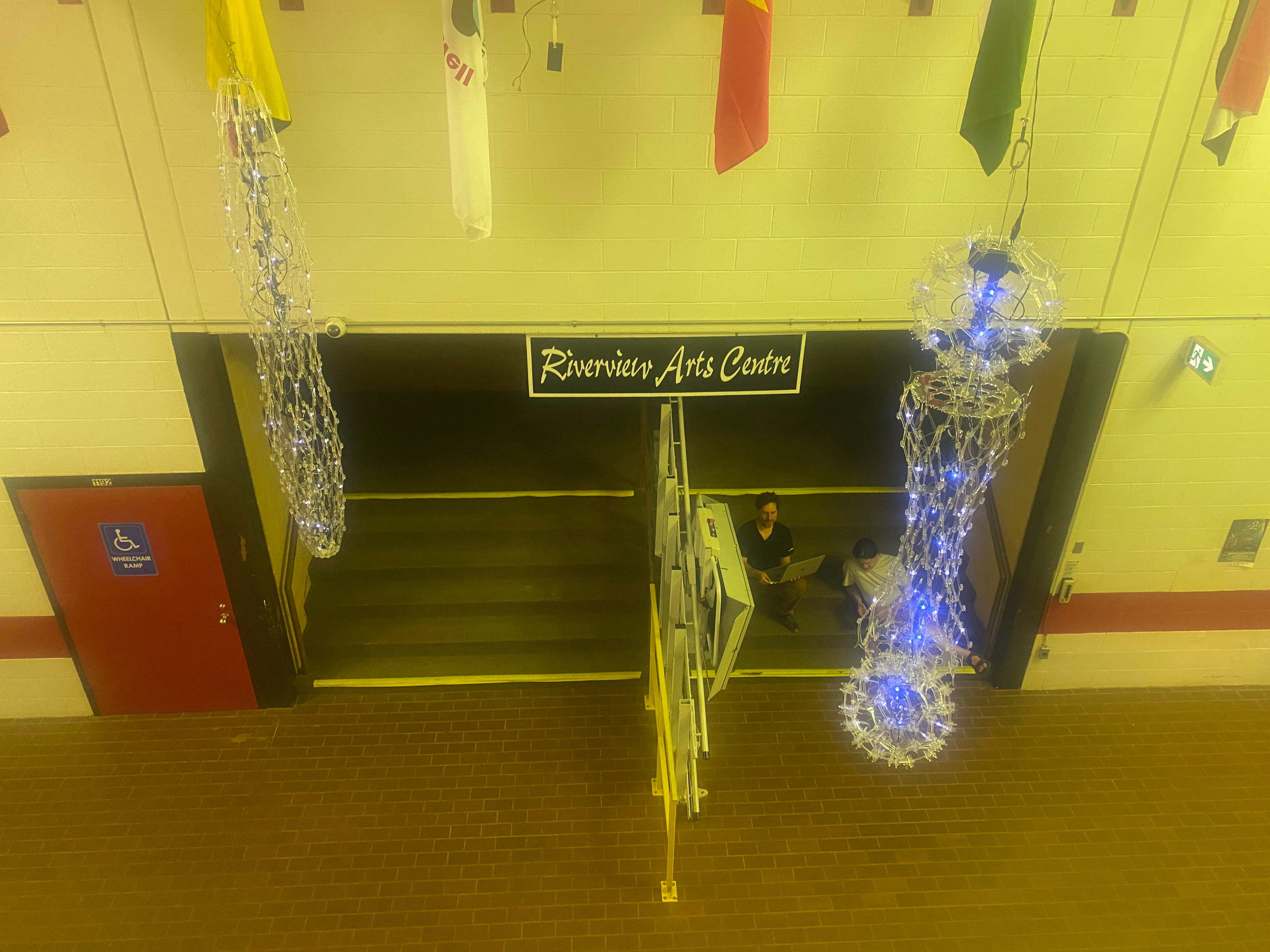
Integrative teaching in high school
Humans throughout history have dreamed of reaching out and touching the stars. Thanks to a unique collaboration with the University of Waterloo, Students at Riverview Highschool in New Brunswick can do just that — with a little help from a ladder.
Project LEO, standing for Light Embodied Odyssey, and named after the constellation, is a suspended columnar interactive light sculpture that responds to movement.
Students at Riverview have been learning remotely from Rob Gorbet, associate professor in the Faculty of Environment at the University of Waterloo and his brother Matt, a partner in Gorbet Design, about science, electronics, coding, emotion, and form. They have applied it all by creating LEO, a hands-on project that incorporates all these elements of Science, Technology, Engineering, Arts, and Mathematics (STEAM).
Gorbet is working with Riverview’s award-winning science teacher Ian Fogarty to help his high school students use interdisciplinary knowledge to make connections across their courses by engaging in an interactive design project.
“Students mention the feeling of empowerment they get from making a thing and putting it out in the world,” says Gorbet. “After being involved, they have talked about seeing themselves and their interests in more connected, higher-dimensional ways.”

Right to Left: Prof. Rob Gorbet and his brother Matt, a partner in Gorbet Design
Gorbet’s goal as a Knowledge Integration (KI) professor is to challenge both students and the school system to rethink the labels they put on themselves. LEO is one example of how integrative projects might change how schools teach by helping advance cognitive development and critical thinking skills by encouraging synthesis of ideas. The project, displayed in Riverview's main entrance, serves as a catalyst for conversation and brings different social groups together to encourage discussions about art, science, and education.
The project started in 2020-21, with the first cohort using the form language and electronics from Waterloo’s Living Architecture Systems Group to construct the first column. They focussed primarily on designing the light behaviours to represent different human emotions. In the 2021-22 school year two more columns were designed by students. This time they focussed on fabrication technology and sculptural aspects to design and make their own science-inspired forms for the columns.

Project LEO Installation at Riverview Highschool in New Brunswick
With more columns still to build, the project will continue for another few years. The students’ imaginations are boundless: might future iterations be able to read and respond to human emotions by using a camera and Artificial Intelligence (AI)? How might the sculpture reflect the environment, for example the tides in the nearby Bay of Fundy? As they are completed, each column of the project is raised in specific relation to the others to represent the constellation LEO, a tribute to the school’s lion mascot, and to the students’ ideas and efforts coming together to spawn a whole new creation.
Hopefully, this project will open the door for incoming and outgoing students to come up with more involved innovative ideas that will change the way they think of themselves and the world around them.
Learn more about project LEO: https://livingarchitecturesystems.com/project/riverview-column/
Learn more about the LASG: https://livingarchitecturesystems.com/about
More about Knowledge Integration: https://uwaterloo.ca/future-students/programs/knowledge-integration